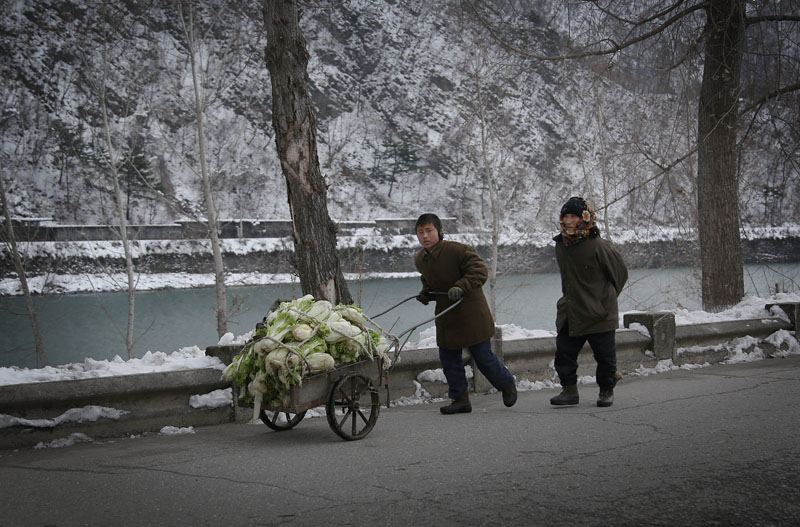North Korea hunkers down for harsh winter
HYANGSAN COUNTY: North Koreans are hunkering down for a harsh winter that some fear could be made worse by a poor harvest following summer floods.
In rural areas like Hyangsan County, in North Pyongan Province, about 130 kilometers (80 miles) from Pyongyang, people are out each day on snow-covered roads pulling cartloads of firewood and cabbage and stockpiling whatever else they can for the months ahead. Most have just finished preparing their kimchi — the pickled and spiced cabbage that is a staple of the Korean diet.
To get through the winter, many rural North Koreans will be using charcoal braziers or burning wood or corn husks for heat, which can lead to asphyxiation if homes shut tight against the sub-zero temperatures are not ventilated properly.
They will also be stretching out their supply of kimchi, government rations and whatever they can grow from their own "kitchen gardens" — small plots of land that families are allowed to maintain to grow food for their own needs. If they are lucky enough to have a chicken, they may have an egg or two. In some regions they might have access to a very small amount of meat and fish.
The combination of the limited variety of foods that are available and the stresses on the body from enduring the frigid weather is a major hardship for most North Koreans.
But while it has the added burden of being bitterly cold, winter is generally not the toughest time of year as far as the food supply goes. North Korea's "lean season" is actually from March to August, when leftover supplies are depleted and the next harvest is still growing.
Conditions have also improved dramatically since the widespread famine in the 1990s, when a combination of bad weather, a dysfunctional distribution system and the fall of the Soviet Union and other Eastern bloc benefactors led to a massive calamity euphemistically referred to here as the "Arduous March." North Korea is now closer to food self-sufficiency than it has been in decades.
Even so, with a limited and often unreliable power grid, rural homes, hospitals, schools and other public places often have little or no functioning electrical heating.
And if the main crops of rice, potatoes and corn are thin and the winter crop, mainly wheat, is poor, that could make the coming lean season even leaner in a country where it is estimated that roughly 80 percent of the population still do not have an adequately varied and nutritious diet. According to the World Food Program, North Koreans consume 25 percent less protein and 30 percent less fat than the amount required for a healthy life.
Darlene Tymo, the WFP's country director in North Korea, said that although official statistics from the North Korean government are not out yet, the main harvest of the year is believed to have been worse than last year and that could mean especially remote and impoverished areas — particularly the mountainous provinces of Chagang and Ryanggang along the border with China — could be looking at a harsher than usual winter ahead.
"All indications are that it will be down from last year and the question is what percentage down," Tymo told The Associated Press in an interview at the WFP's office in Pyongyang.
"The big problem that remains, and I think it's particularly difficult in the winter, is the lack of diversity in the diet. Outside of the capital it is a population that very seriously lacks in proteins and fats, and certainly in vitamins and minerals," Tymo said.






